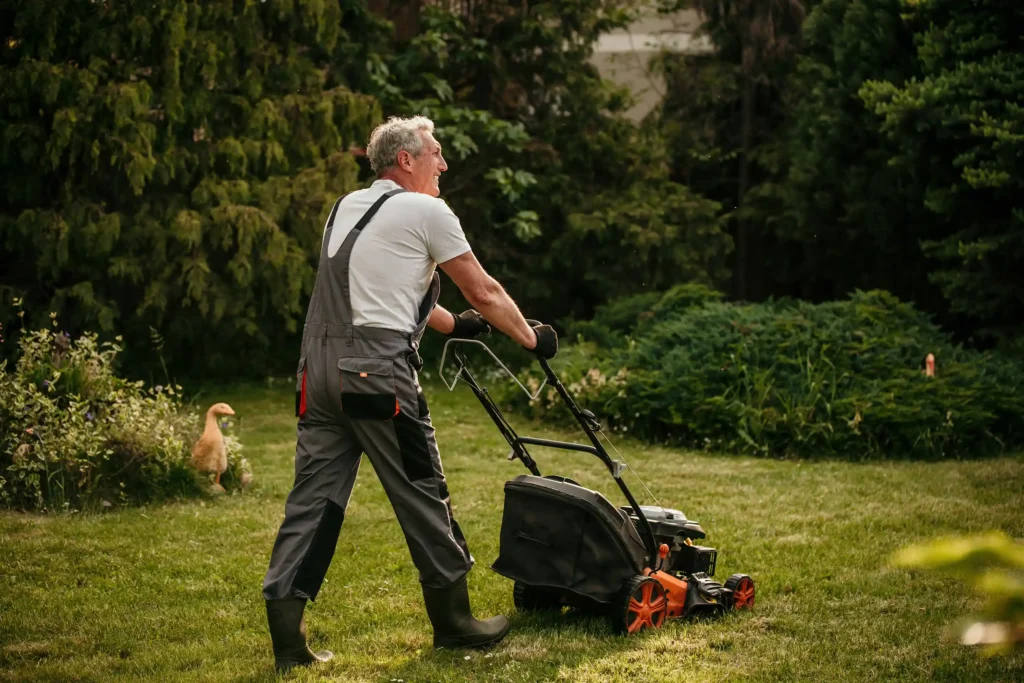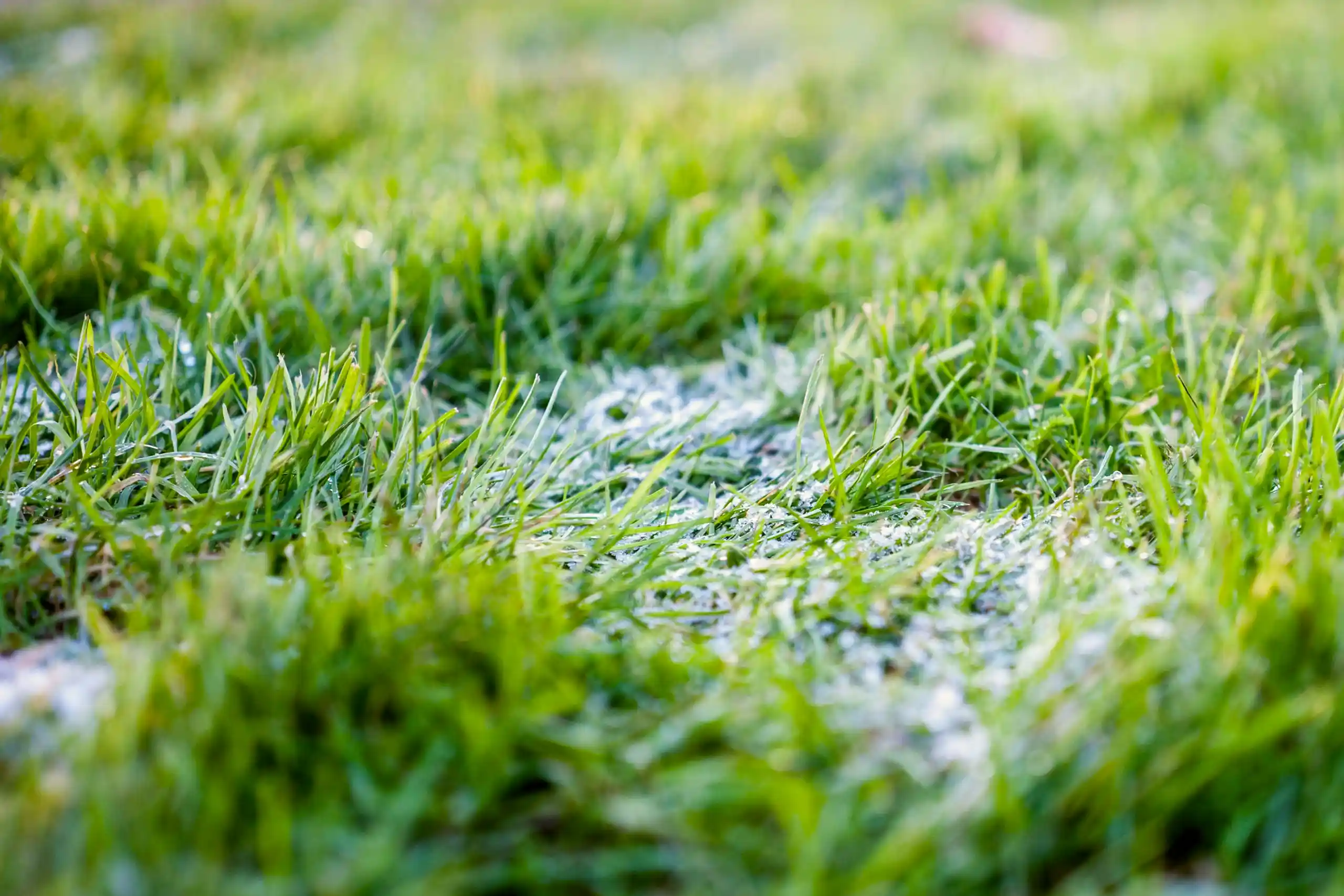Shorter days, colder temperatures, and the beginnings of frost can only mean one thing…winter is here!
This season is renowned for being tough on lawns, so it is important to adapt your lawncare routine to ensure your lawn survives during the colder months.
Winter lawn care is not about making dramatic changes to your lawn but rather about protecting your grass and ensuring it stays healthy and strong.
Continue reading to understand how to care for your lawn in winter, including what to apply, how to maintain it, and what you should and should not do.
Do lawns grow in winter?
Due to the drop in temperature and reduced daylight hours, most lawns experience very little to no growth during winter.
For new grass seed to germinate or for an established lawn to grow, the soil temperature must be at least 8°C to 10°C or higher to ensure successful growth.
In the UK, the temperatures usually drop in November and continue to stay low throughout December and January.
During this time, you may notice that your lawn’s growth has stalled and that its colour has faded, often to brown or yellow.
Do not panic; this does not mean your grass is dead, but rather that it is dormant and is conserving its strength until its preferred growing conditions return.
What should I apply to my lawn in winter?
An essential part of winter grass care is ensuring your lawn is well-fed, as this can help maintain its strength and increase resilience against pests and fungus.
We recommend using our expertly formulated Winter Wellness Fertiliser, enriched with ingredients that promote root development and reduce plant stress.
You can also apply lime to your lawn if the soil is too acidic (a pH of 4.9 or below).
Acidic soil can prevent your grass roots from absorbing key nutrients, weaken their root systems, and make them more susceptible to fungal diseases like snow mould.
If you suspect your soil may be too acidic, you can use a soil test kit to determine if you need to use lime.
How can I keep my grass alive in winter?
Winter can put a lot of stress on your lawn, so it is important to adjust your lawn care routine to adapt to the new conditions.
The main focus of lawn maintenance in winter is preparation and protection, ensuring your lawn has everything it needs to remain strong throughout the colder months ahead.
Use the following steps to maintain a healthy lawn during winter:
- Feed regularly. Keep your turf strong with our Winter Wellness Fertiliser that helps to increase its resilience against diseases and sets a good foundation for spring.
- Clear your lawn. Remove any leaves or debris that are littering the lawn, as well as any garden furniture or children’s toys. Your lawn is already working hard to survive and does not need the extra pressure of unnecessary weight.
- Mow wisely. In winter, it is important to only mow your lawn when necessary and if conditions are favourable. If you do plan on cutting your lawn in winter, you need to ensure your mower blades are sharp and have a raised cutting height. If temperatures drop below 5°C, your lawn will stop growing and not require mowing.
- Keep off the grass. If frost is present, try to keep the foot traffic on your lawn to a minimum, as walking on frozen grass can damage the blades and cause soil compaction.
- Watch out for waterlogging. Monitor your lawn for water puddles appearing after any heavy rainfall during winter, as this could indicate that the soil is compacted. We do not recommend aerating in winter, but rather in spring or autumn when the conditions are more favourable.
- Control winter weeds. Due to the cold temperatures, weeds will not be actively growing, so chemical weed killers will have little or no effect. If weeds are an issue, the best way to deal with them is by manually removing them.
- Apply mulch to bare spots. Spreading a thin layer of mulch over thin or bare patches can help protect the soil and grass roots from damage by frost and temperature fluctuations.
- Service your mower. You will be using your mower less frequently in winter, so now is the perfect time to get it in the best shape for spring. Make sure it is thoroughly cleaned, the blades are sharp, or your mower is replaced if needed.
Can you cut a lawn in winter?
Yes, you can cut your lawn in winter, but only if it is necessary and the conditions are ideal for doing so.
You should only cut your lawn in winter if:
- Your lawn is dry. Mowing wet grass can cause damage to the grass blades, resulting in an uneven cut, and can cause soil compaction.
- The temperature is +5°C. Your grass will not be actively growing below this temperature, so mowing will cause unnecessary stress and damage to your lawn.
- Grass is growing. If your grass has not become dormant, mowing can be beneficial for keeping your lawn well maintained and improving airflow, reducing the risk of fungal infections.

Should you rake grass in winter?
You should lightly rake your lawn regularly to remove any fallen leaves and debris during the winter.
Leaving these on your lawn can lead to thatch build-up which can prevent your lawn from receiving nutrients, air, and water.
However, it is important to make sure that you only rake your lawn when the grass is dry and the soil is firm.
In addition, you need to ensure that you do not rake too heavily, as this can cause unnecessary damage and leave your lawn vulnerable to diseases.
Ready to start your winter lawn care?
It is important to remember that just because your lawn is not growing does not mean you should stop caring for your lawn.
By taking the right approach and focusing on maintaining and protecting your lawn, you can help it survive winter and prepare it for a healthy start in spring.
Kickstart your lawn’s rest and recovery period by taking our quiz to find the perfect products tailored to your needs.
